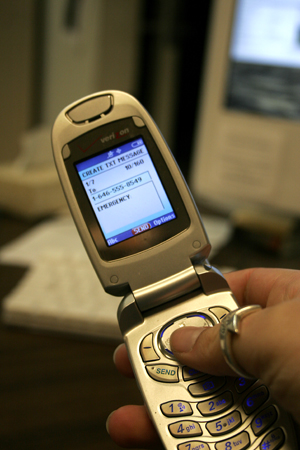
Last night, a university used text messages to alert roughly 3,500 students about a fire that forced 5,000 students to be evacuated from the school’s union.
But while emergency texts were used to contact Arizona State University students, Binghamton University’s own text message subscribers number just below 3,000.
Despite BU’s efforts to promote a free text message alert system, only 2,956 people ‘ just over 17 percent of the campus population ‘ have subscribed to receive the notifications in case of an emergency.
The low numbers are part of a larger trend seen in universities across the country. Though college administrators scrambled to provide systems of notification in the weeks and months after the shooting at Virginia Tech on April 16, relatively low numbers of students on college campuses have signed up for the free service.
Even at Virginia Tech, where a gunman killed 32 people before taking his own life, the subscription rate is about 60 percent, according to a report by NPR earlier this month.
The low numbers at Binghamton constitute less than a fifth of the campus population of students, faculty and staff.
‘It’s a little disappointing,’ said Don Rauschmeier, the senior associate director of Telecom who tracks the text messaging subscriptions at BU. ‘If you take all the students and faculty, that’s not a high percentage at all.’
At BU, the text messages are one in a series of alerts BU has implemented in case of an emergency. The system also includes auditory alerts, building administrators with two-way radios, emergency messages on screens in campus dining halls, e-mails and the ‘BU Alert Line.’
‘It [text messaging] is one piece of a much broader process,’ said Tim Faughnan, BU’s deputy chief of police. ‘We want to get the message out as fast as possible in as many ways as we can.’
In some cases, he added, messaging is not a feasible method of communication. When the emergency cuts off phone service or when students do not have access to the cell phones, the service is obviously futile.
But last night’s evacuation at ASU was not the only situation where messages were used.
In the last week alone, universities around the country have been using the service to alert students about emergencies. Last weekend, two universities in West Virginia messaged about 5,000 students about a shooting in a housing complex.
On Tuesday night, Wittenberg University in Ohio notified students about an armed gunman on campus. Less than an hour later, they sent a message telling students he was apprehended. The incident later turned out to be a prank.
Despite the messages’ practical applications, Faughnan said students and faculty may not be signing up because they are careless about ensuring their own safety.
‘It’s not something we can do alone,’ Faughnan said about the University. ‘I think a lot of people are waiting for somebody to make them safe.’
According to a University spokeswoman, BU made concerted efforts during summer orientations and Family Weekend to get students signed up for the service.
Though some universities, like Boston University, have made subscription mandatory for students, the spokeswoman said the other BU ‘ Binghamton ‘ has no plans to do the same.
The service is free and available at getrave.com/login/binghamton, or through the Telecom Web site.
‘It’s free, it takes a couple of clicks, and you’re in,’ Faughnan said.


